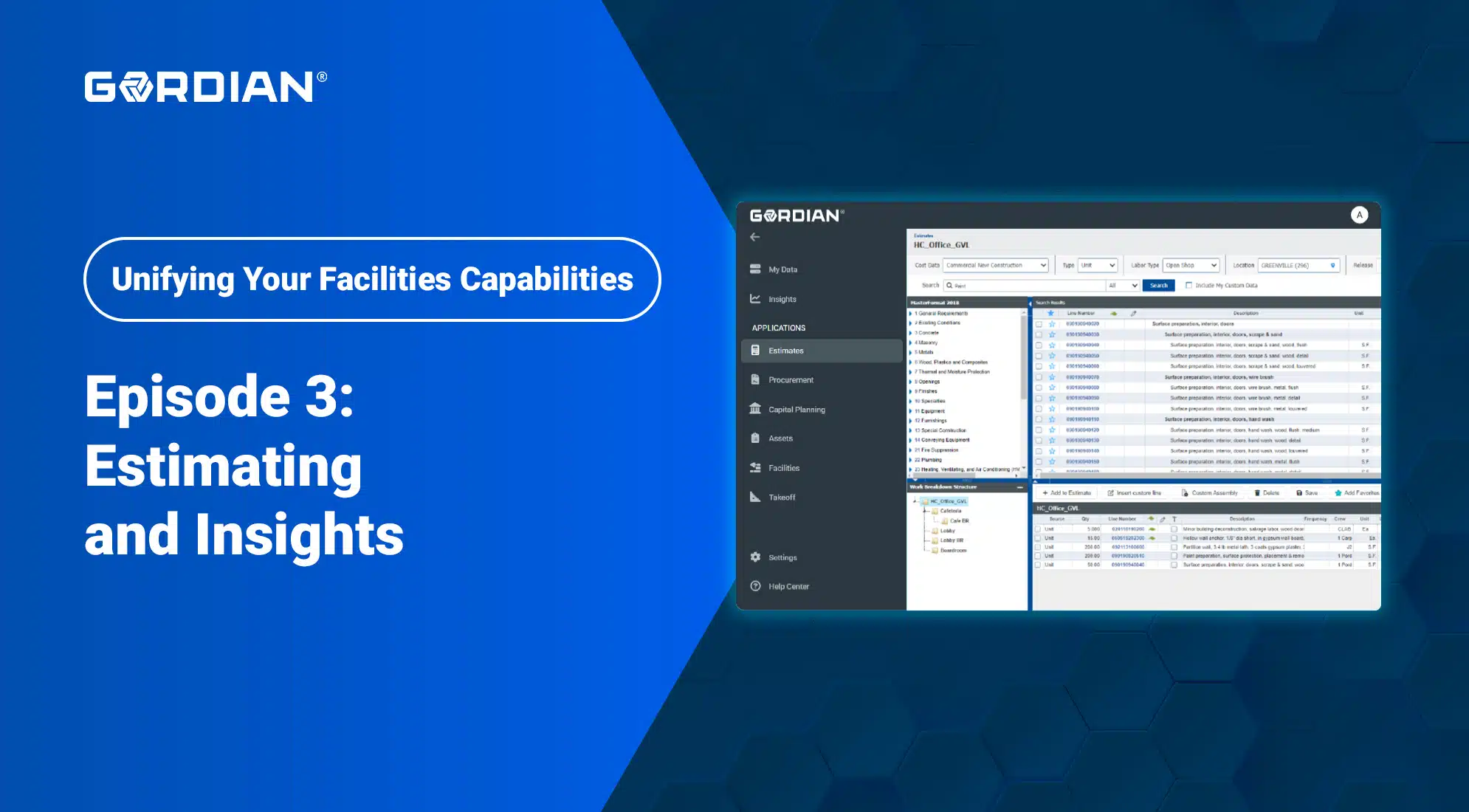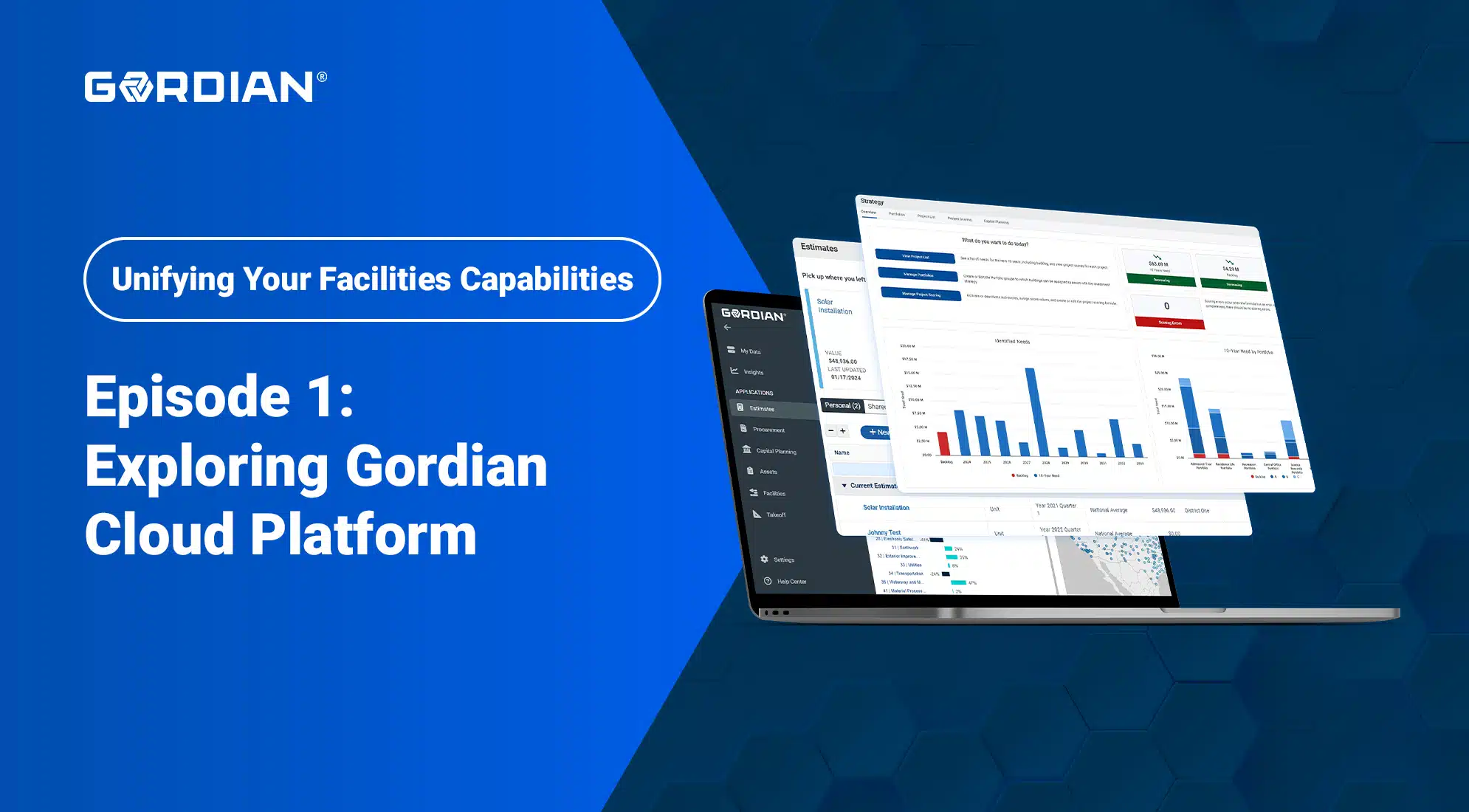Entering 2025, organizations need to stay ahead of emerging trends and practices to ensure their facilities are running efficiently and sustainably. At the forefront of these efforts are facility managers, who are tasked with overseeing the day-to-day operations of buildings. As the demands of building management grow more complex and nuanced, implementing facility management best practices is key to optimizing operations, reducing costs and ensuring long-term sustainability.
Stay ahead of the curve by keeping your organization’s facilities portfolio well-maintained using these best practices.
What condition are your organization’s facilities in? Find out now.
Embrace Technological Advancements
Technology is revolutionizing the way facilities are managed. Therefore, staying on top of the latest tools is crucial for success. In 2025, facility managers will need to start or continue incorporating smart technologies (such as AI-powered predictive maintenance and Building Management Systems) to improve building operations and enhance the occupant experience.
Focus on Sustainability and Energy Efficiency
With global climate concerns intensifying, sustainability has become a business imperative. Facility managers are expected to reduce environmental impacts while ensuring cost-effective and efficient building operations. In 2025, there will be increased pressure on organizations to achieve ambitious sustainability goals.
Here are some ways facility managers can embrace green practices:
Energy Efficiency Audits
Regular energy audits can help identify areas where a facility is wasting energy and pinpoint opportunities for improvement. Common areas of inefficiency include outdated lighting systems, underperforming HVAC units and poor insulation. By implementing energy-saving solutions like LED lighting, motion sensors and high-efficiency HVAC systems, facility managers can reduce operational costs and contribute to environmental sustainability.
Green Building Certifications
Building certifications such as LEED (Leadership in Energy and Environmental Design) or WELL Certification help validate a building’s commitment to sustainability and occupant well-being. Pursuing these certifications not only helps facilities meet regulatory standards but also positions them as attractive spaces for tenants who prioritize environmental responsibility.
Renewable Energy Integration
As renewable energy technologies such as solar and wind become more accessible, facility managers should consider integrating these sources into their building systems. Solar panels, wind turbines and geothermal heating and cooling can significantly reduce reliance on traditional energy sources and lower utility costs in the long run.
Prioritize Health, Safety and Wellness
Creating environments that promote occupant well-being, both physically and mentally, will continue to be essential.
Indoor Air Quality (IAQ)
Improving indoor air quality has become a critical aspect of facility management, particularly after the pandemic. High-quality HVAC systems, advanced filtration technologies (like HEPA filters) and regular air quality monitoring are essential to ensuring a healthy indoor environment.
Cleanliness and Hygiene Protocols
Facility managers will continue to place a strong emphasis on cleanliness and sanitation practices. Investing in advanced cleaning technologies like ultraviolet (UV) disinfecting systems and touchless cleaning methods can help facilities stay ahead of health-related challenges.
Implement a Comprehensive Asset Management Strategy
Effective facility management requires a clear understanding of the building’s assets and their current condition. An asset management strategy helps facility managers make informed decisions about repairs, replacements, and upgrades. In 2025, one of the most important tools for managing a facility’s assets will be the Facilities Condition Index (FCI).
What is the Facilities Condition Index (FCI)?
The Facilities Condition Index (FCI) is a ratio that compares the cost of deferred maintenance (or repair needs) to the total replacement value of a facility. It provides a snapshot of the overall condition of a building and helps facility managers prioritize maintenance and capital improvement projects. A lower FCI indicates that the facility is in good condition, while a higher FCI indicates that more significant repairs or upgrades are needed.
The formula for calculating the FCI is straightforward:
\[
FCI = \frac{\text{Cost of Repair Needs}}{\text{Current Replacement Value of the Building}}
\] Put in simple terms, the equation looks like this:

Why FCI is Critical for Facility Managers in 2025
As facilities age, the cost of maintaining them rises and the risk of unexpected breakdowns increases. An up-to-date FCI allows facility managers to:
- Prioritize Maintenance and Repairs: By understanding which systems or components are in the worst condition, facility managers can prioritize repairs and allocate resources efficiently.
- Plan for Capital Expenditures: FCI helps facility managers project future maintenance costs and plan for long-term capital improvements. By understanding the condition of the building, they can better allocate budgets for major renovations or upgrades.
- Increase the Lifespan of Assets: Regularly tracking FCI helps ensure that maintenance is performed at the right time, preventing the premature failure of key systems and extending the overall lifespan of the facility.
- Make Data-Driven Decisions: By incorporating FCI into facility management software or integrated asset management systems, facility managers can make informed, data-driven decisions about when to repair or replace assets.
Don’t wait. Find out your organization’s FCI score estimate in minutes at no cost.
As the role of facility management continues to evolve, adopting best practices in technology, sustainability, health and wellness, and asset management will be essential for success. Additionally, understanding an organization’s FCI helps managers make informed decisions about how to prioritize maintenance, allocate resources and plan for future capital expenditures. With the right tools and strategies in place, facility managers can not only maintain but also enhance the value and performance of their facilities, ensuring they remain competitive, sustainable and efficient for years to come.





